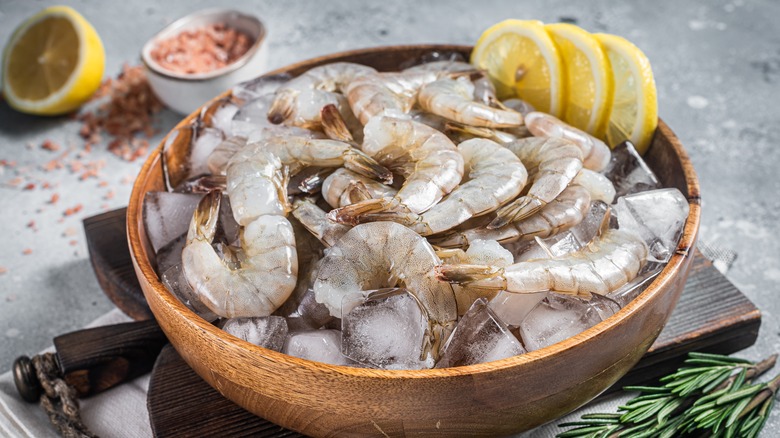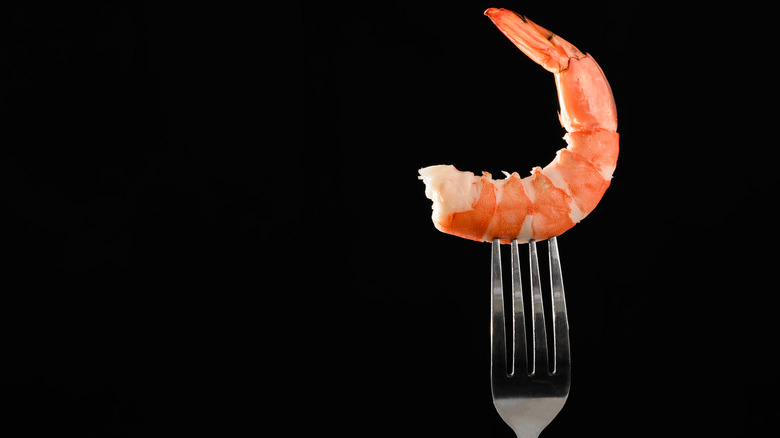A Fork Is The Perfect Tool To Remove Shrimp Shells
To peel or not to peel, that is the question. While keeping crustaceans in their protective exoskeleton can mean plumper, juicier, and tastier meat, there's a case to be made for peeling prawns, shrimp, and other ten-legged swimmers. The main reason being that it simplifies the dining process. Rather than wrestle and wrangle with shell-on shrimp, peeling them prior to cooking makes for easier and mess-free enjoyment, which is ideal especially for a cocktail hour or fancy dinner soirée. The process may seem tedious regardless of when it happens, but peeling shrimp like a pro is easy so long as you have a fork.
Rather than opt for fancy gadgets that promise to make peeling a breeze, the only tool you'll ever need to efficiently and effectively de-shell shrimp is a fork. But, before reaching for the utensil, prep your shrimp. Working with one crustacean at a time, remove the head and legs off of raw (or thawed) shrimp. With a light tug, these parts should easily detach, at which point, you can begin the peeling process.
Holding a shrimp in one hand and the utensil in the other, place a fork tine underneath the shell at the vein — this starting point removes the shrimp's digestive tract, eliminating bitter flavors and sandy textures. In one swift motion, drive the fork tine towards the tail, tugging slightly to detach the meat from its shell. To leave the tail intact, stop just short of it, piercing the shell and twisting.
When to peel shrimps, and what to do with those shells afterwards
Like we mentioned before, there are times when it's worth leaving shells on. A rich and brothy gumbo or aesthetically pleasing seafood paella are prime examples of recipes that beg for shell-on shrimp. Likewise, preparing delicate shrimp using a high-heat cooking method like grilling can also be cause to keep shells on. Otherwise, for a simple seafood salad, shrimp cocktail, or dishes where meat is blitzed like shrimp burgers or dumplings, the crustacean is best peeled.
As for what to do with leftover shrimp shells, refrain from tossing them just yet. Prior to inevitably being sentenced to the compost bin, that mountain of shells can be put to use in a seafood stock. Adding a sweetly savory and borderline briny edge, shrimp shells (but also tails and heads) can be tossed into a large pot of water alongside aromatics and other food scraps and left to simmer. The resulting stock can then become a base for hearty stews and decadent fish chowders. It can even be used as a flavorful cooking liquid, adding depth to lackluster sauces and one-dimensional braises.
Whether you peel shrimp or leave them as they are, the choice is yours. However, with these crustacean-peeling tips and tricks, tackling shell-on shrimp no longer needs to feel intimidating.

